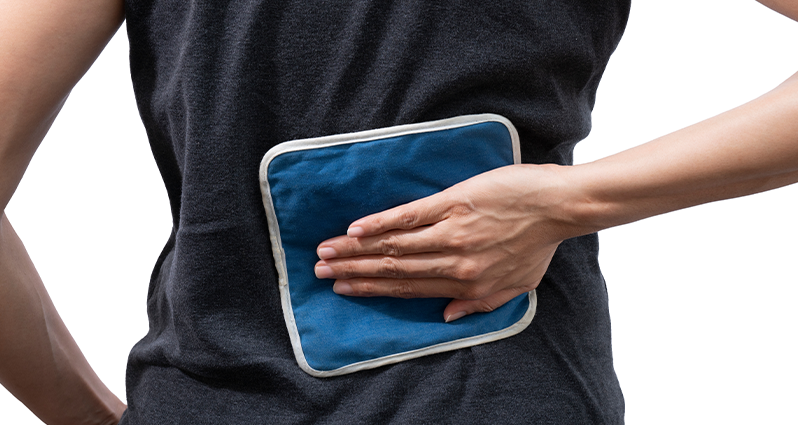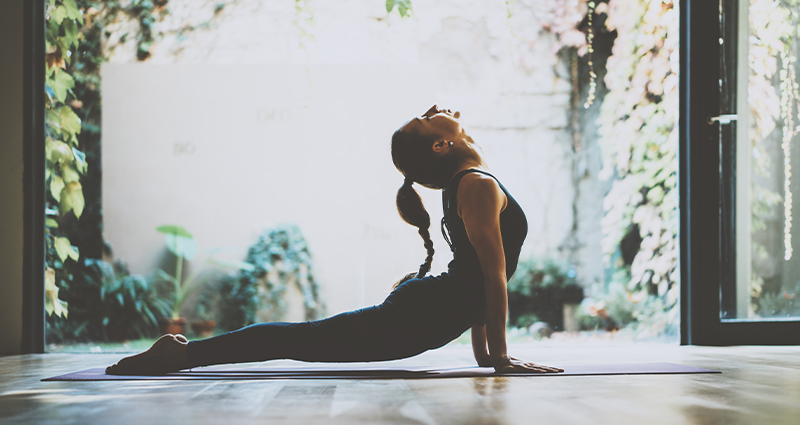Sciatica is often extremely painful – it is a condition that extends from the lower back to the legs.
This ailment is often caused by compression of the sciatic nerve, which is the body’s longest nerve and controls muscles in the lower leg and foot. Whether it is mild pain, a burning sensation, or an electric-shock type pain, sciatica can be tough to ignore.
Sciatica pain can be debilitating and can have a negative impact on an individual’s quality of life. Thankfully, there are various home remedies that may relieve the pain and stress that comes with this sciatica.
In this article, we will discuss home remedies for sciatica pain, including the benefits of using diclofenac gel for sciatica. Additionally, we will provide tips on how to get sciatica relief. Say goodbye to the discomfort and frustration caused by sciatica pain and read on to learn about the most effective remedies available.
Cold Treatment
Hot or cold compresses can help reduce inflammation and alleviate pain associated with Sciatica. Cold compresses work by reducing inflammation, while hot compresses work by increasing blood flow and relaxing muscles.
To make a cold compress, wrap ice cubes in a towel or use a bag of frozen peas. Apply it to the affected area for a few minutes at a time, several times a day. You can also use ice packs applied to the lower back in the first week – this can help alleviate some of the inflammation from Sciatica. Always wrap the ice pack in a towel or cloth, using it directly can cause frostbite.

Heat Treatment:
Once the area begins healing and the pain and inflammation have begun to reduce you can apply heat (use a heating pad or a hot water bottle) to stimulate blood flow to the area. To make a hot compress, soak a towel in hot water, wring it out, and apply it to the affected area. You can also use a heating pad for a few minutes at a time, several times a day. The warmth relaxes muscles so that you can stretch them with less discomfort.
Vary Your Postures:
Try shifting position every 20 minutes to reduce strain. Sciatica pain can be triggered by staying in one position for lengths of time. Movement reduces pressure on the spine as well. Some tips for maintaining proper posture and ergonomics include:
- Sit with your feet flat on the ground and your back straight.
- Use a lumbar support pillow or roll to support your lower back.
- Stand up and stretch every 20 minutes if you are sitting for an extended period.
Try Yoga:
There are various yoga positions that can aid with sciatica relief, including:
- Downward-Facing Dog: By lengthening the spine and stretching the hamstrings, this posture can assist to ease the strain on the sciatic nerve. Beginning on your hands and knees, raise your hips up and back until they form an inverted “V” shape. If necessary, keep your knees slightly bent.
- Pigeon Pose: By stretching the glutes and hip flexors, this position can assist in relieving sciatic discomfort. Start on your hands and knees and bring your right knee to the back of your right wrist. Slowly lower your body to the ground while extending your left leg behind you. Repeat on the other side.
- Cobra Pose: This position helps ease sciatic discomfort by strengthening the back muscles that support the spine. Place your hands next to your shoulders while lying face down on the ground. Then, pull your chest up while maintaining your elbows close to your body.

Massage
Massage can also aid in alleviating the discomfort associated with sciatica pain. An increase in blood flow, a decrease in muscular tension, and pain relief can all be achieved by massaging the afflicted region. Use a foam roller or massage ball to self-massage the troubled area before considering visiting a professional massage therapist.
Exercise:
Regular physical activity can help keep your core muscles (abdomen and lower back) and spine strong. This will help you keep your spine properly aligned and improve posture as well. Rest for some days until the sciatica pain eases a bit, but then slowly introduce some form of exercise. It could be something as simple as just walking at first.
One of the best home remedies for sciatica is stretching exercises. Stretching can help relieve the pressure on the sciatic nerve and reduce sciatica pain. Some of the best stretching exercises for sciatica include:
- Knee to Chest Stretch: Lie on your back and bring one knee up to your chest while keeping the other leg straight. Hold for 30 seconds and switch sides.
- Hamstring Stretch: Sit on the floor with your legs straight in front of you. Slowly reach forward and try to touch your toes. Hold for 30 seconds.
- Piriformis Stretch: Sit on the floor with your legs crossed. Place your right ankle on your left knee and gently push your right knee away from your body. Hold for 30 seconds and switch sides.

Acupuncture:
Acupuncture is an ancient Chinese practice that involves inserting thin needles into specific points on the body to relieve pain and promote healing. It can help alleviate sciatica pain by releasing tension in the muscles and reducing inflammation. Be sure to find a qualified acupuncturist and let them know that you have sciatica so they can focus on the appropriate points.
Pain Relief Gel for Sciatica Pain
You can help alleviate the problem with this effortless home remedy for sciatica pain – a pain relief gel or pain relief spray. These over-the-counter solutions are easily available at pharmacists and are a topical treatment for sciatica pain.
If you’ve tried searching for the best cream for sciatica pain, you might have come across some diclofenac sciatica gel for sciatica pain, like Omingel and Voltaren gel for sciatica treatment. Applying such gel to the affected area can help reduce inflammation and relieve pain.
Is diclofenac good for sciatica?
Diclofenac sciatica gel, a nonsteroidal anti-inflammatory drug (NSAID), can be effective in reducing the inflammation and pain associated with sciatica. Diclofenac sciatica gel works by blocking the production of prostaglandins, which are chemicals in the body that cause inflammation and pain.
But where to apply gels like Ominigel, Voltaren, etc for sciatica?
Firstly, it’s important to note that sciatica gel should only be applied externally to intact skin, and should never be applied to open wounds or cuts. Additionally, you should always follow the instructions on the label and check with your doctor before using any new medication including diclofenac gel for sciatica. Now, to answer the question of where to apply gels like Omnigel and Voltaren for sciatica, it is typically recommended to apply the sciatica gel to the area of your lower back where the pain is most intense. This may be on one side of your body or both, depending on the specific location and severity of your sciatic pain.

You can apply the sciatica gel up to 4 times a day, with at least 4 hours between applications. Gently rub the sciatica pain relief gel into your skin until the sciatica cream is fully absorbed, and then wash your hands thoroughly.
Now, let’s come to the most important question: which is the best cream for sciatica pain?
Omnigel, a popular remedy, is the best cream for sciatica pain. It is an effective way to deal with a range of aches and pains. Simply apply this sciatica pain relief gel along the areas that are troublesome to ease pain and discomfort. The gentle heat from the sciatica pain relief gel will give a soothing sensation almost immediately while the formulation of this best cream for sciatica pain works deeper, easing inflammation and pain. Sciatica cream can be used multiple times a day or as instructed by your doctor, offering much-needed sciatica relief.
Whether it is sciatica pain, a muscle ache, or joint pains, Omnigel can help! Find out more about the best cream for sciatica pain that can help make those sharp sciatica pain and dull aches history.

